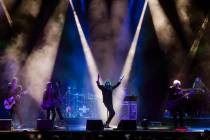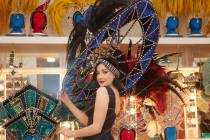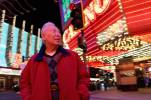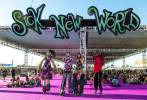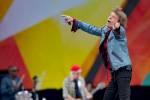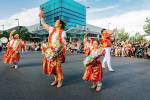Argentine dancer makes floor seem merely an option
You will believe a dancer can fly once you have experienced work by Argentine Herman Cornejo. The performer with the American Ballet Theatre danced twice at the 40th anniversary gala of the Nevada Ballet Theatre at The Smith Center on Saturday night before a large crowd.
Bare-chested in a loincloth or classic cool in a suit, he was the epitome of strength and stamina. Scissor kicks, stag leaps, twists and turns were incorporated into any sequence as easily as if he were strolling across the stage.
In his opening pas de deux with fellow ABT performer Cuban Xiomara Reyes, he made it appear that the use of the floor was a mere option, a place to steady himself for a moment before he was off and up again and again.
Later, his self-choreographed "Tango & Yo" gave him a chance to mix moves of the typical Argentine dance with his extraordinary efforts above the ground.
He was part of the fireworks of an exhilarating evening of dance.
Artistic director James Canfield worked extensively with George Balanchine in Canfield's years as a dancer and this program included both the Balanchine ballet "Serenade" and the Balanchine-influenced "Red Angels," choreographed by the late Ulysses Dove.
Canfield's own work, "4 Songs," concluded the evening, accompanied by vocalist Matt Goss, a Caesar's Palace headliner originally from the United Kingdom, and his seven-piece group.
Members of the Las Vegas Philharmonic, under the direction of Terence Kern, also provided welcome accompaniment from the pit, while violinist Mary Rowell kept "Red Angels" moving to a distinct beat with her almost otherworldly electric violin.
Performers in a brief but charming pas de deux from "Swan Lake" - Canfield's tribute to the early years of Nevada Ballet, since he himself danced it for the company in 1986 - and "Red Angels" were members of the Pacific Northwest Ballet. Peter Boal is its artistic director.
The opening "Serenade," which premiered in 1935, created beautiful images on stage. There were more than a dozen perfect ballerinas in gauzy blue, arms extended just so, moving as one, in small groups, then together, gliding from one grand scene to the next.
Yes, there were a few men who came in, did a lift or more and disappeared soon after, but it was the precision and the ever-moving poetry of the female dancers that gave this number its reserved and sophisticated life.
But some audience members got antsy as the understated piece seemed to last a little too long.
Also in Act I, "Diana and Acteon" is the last remaining dance from a 19th century creation for the Russian Imperial ballet, "Tsar Kandav."
Reyes was a fiery Diana, Greek goddess of the hunt, while Cornejo was the dynamic Acteon, a hunter. Reyes had the moves and an often imperious expression right for the role, but it is doubtful that anyone could duet with Cornejo and dominate him.
"Red Angels," which premiered in 1994, dressed two men and two women in bright red unitards that laced up the front, and gave them moves that were Balanchine mixed with rhymthic motions of modern dance, jazz and a bit of dirty dancing.
There were some uncomfortable giggles at the beginning gyrations, but things smoothed as the electric, electrifying music gave everyone a reason to move.
Each pas de deux was quick and often followed by a solo or a pose or an adamant coming together and striding apart. Moves were deft and defined - with a swift finality. It all combined for the most enveloping ensemble piece of the night.
Matt Goss' stylings easily recalled Rat Pack days, and he seemed to encourage this image, with the tux, the casual fedora and his treatment of each number, all before musicians who would be comfortable in the main room at any casino.
Goss sang Leon Russell's "A Song for You," as well as several original compositions debuted here including "Liar" and "Maverick," with affable chatting between each number.
Musicians were at the back of the stage, dancers center stage and Goss in the front. Lighting and staging could have been lifted from a TV variety show decades ago. Dancers were bouncy and bright, in costumes a la "West Side Story," bopping and rocking - even jazzy in toe shoes.
Goss's voice was great, if initially far too loud, and the sequence presented a solid, enjoyable image to conclude the night. A nagging question: Was this the best use of the time? Should the finale of this major celebration have used these strong dancers as little more than a happy television ensemble?
A technical problem continues to plague the hall: chairs in boxes are moveable, and scrape across the marble floor. These scrapes are common and seemed especially loud between dances on stage.
Several times, the noise resembled the lengthy passing of gas, with a number of audience members giggling awkwardly each time.
The Smith Center has strived for so much sophistication that this seems out of place.
REVIEW
What: Nevada Ballet Theatre 40th anniversary gala
When: Saturday
Where: The Smith Center for the Performing Arts
Grade: A-













